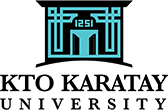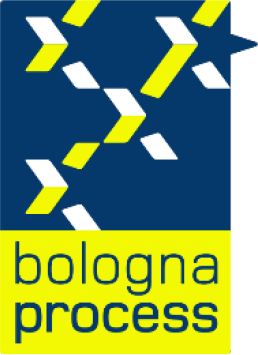Medical Imaging Techniques
Course Details

KTO KARATAY UNIVERSITY
Vocational School of Medical Services
Programme of Medical Imaging Techniques
Course Details
Vocational School of Medical Services
Programme of Medical Imaging Techniques
Course Details

| Course Code | Course Name | Year | Period | Semester | T+A+L | Credit | ECTS |
|---|---|---|---|---|---|---|---|
| 02931005 | Kinesiology | 2 | Autumn | 3 | 2+0+0 | 3 | 3 |
| Course Type | Elective |
| Course Cycle | Associate (Short Cycle) (TQF-HE: Level 5 / QF-EHEA: Short Cycle / EQF-LLL: Level 5) |
| Course Language | Turkish |
| Methods and Techniques | - |
| Mode of Delivery | Face to Face |
| Prerequisites | - |
| Coordinator | - |
| Instructor(s) | Lect. Merve ARI |
| Instructor Assistant(s) | - |
Course Instructor(s)
| Name and Surname | Room | E-Mail Address | Internal | Meeting Hours |
|---|---|---|---|---|
| Lect. Merve ARI | B-Z27 | [email protected] | 7356 | Wednesday 10.00-12.00 |
Course Content
Biomechanics and kinesiology will be defined, and various commonly used terms and concepts will be explained. The biomechanical principles used in equilibrium will be explained and exemplified. Movement and movement types, mechanical principles, normal characteristics of bone and functional adaptation to normal / pathological stresses of bone, bone diseases; mechanics and pathokinetics of synovial joints, movements of joints according to their planes, joint motion and shaking, equilibrium, orientation planes and coordinates, shoulder, elbow, hand-woven mechanics and pathomechanics will be taught.
Objectives of the Course
To have theoretical knowledge about basic biomechanics and kinesiology
Contribution of the Course to Field Teaching
| Basic Vocational Courses | |
| Specialization / Field Courses | |
| Support Courses | |
| Transferable Skills Courses | |
| Humanities, Communication and Management Skills Courses |
Relationships between Course Learning Outcomes and Program Outcomes
| Relationship Levels | ||||
| Lowest | Low | Medium | High | Highest |
| 1 | 2 | 3 | 4 | 5 |
| # | Program Learning Outcomes | Level |
|---|---|---|
| P2 | Has knowledge of general medical terms, first aid issues related to anatomical and physiological issues related to the field of health, and uses applied knowledge. | 5 |
| P | 5 |
Course Learning Outcomes
| Upon the successful completion of this course, students will be able to: | |||
|---|---|---|---|
| No | Learning Outcomes | Outcome Relationship | Measurement Method ** |
| O1 | Ability to express basic theoretical knowledge about the field of health. | P.2.1 | |
| O2 | Ability to understand the basic principles related to the field of health. | P.2.2 | |
| O3 | Ability to integrate basic theoretical knowledge about health into the field of medical imaging techniques | P.2.3 | |
| O4 | Ability to distinguish the basic elements of theoretical knowledge related to the field of health. | P.2.4 | |
| O5 | Ability to develop strategies in the field of medical imaging techniques by combining basic theoretical and practical knowledge about the field of health. | P.2.5 | |
| O6 | Making suggestions for improvements in the field of medical imaging techniques by using basic theoretical and practical knowledge about the field of health. | P.2.6 | |
| ** Written Exam: 1, Oral Exam: 2, Homework: 3, Lab./Exam: 4, Seminar/Presentation: 5, Term Paper: 6, Application: 7 | |||
Weekly Detailed Course Contents
| Week | Topics |
|---|---|
| 1 | Course introduction and training |
| 2 | Basic concepts of kinesiology, laws of motion |
| 3 | Biomechanics and pathomechanics of bone, cartilage, muscle, tendon, ligament tissues |
| 4 | Biomechanics and pathomechanics of bone, cartilage, muscle, tendon, ligament tissues |
| 5 | Occurrence and classification of joints |
| 6 | Structural functional analysis (motion planes, joint structures and functions) |
| 7 | MIDTERM EXAM |
| 8 | Neural control of movement (central and peripheral nervous system, pyramidal and extrepiramidal system, EMG) |
| 9 | Neural control of movement (central and peripheral nervous system, pyramidal and extrepiramidal system, EMG) |
| 10 | Energy mechanics and transformations |
| 11 | Balance and posture, posture control |
| 12 | Mechanism and pathomechanism of the shoulder region |
| 13 | Mechanism and pathomechanism of the shoulder region |
| 14 | Hand wrist and hand mechanics and pathomechanics |
Textbook or Material
| Resources | Ders notları |
Evaluation Method and Passing Criteria
| In-Term Studies | Quantity | Percentage |
|---|---|---|
| Attendance | - | - |
| Laboratory | - | - |
| Practice | - | - |
| Field Study | - | - |
| Course Specific Internship (If Any) | - | - |
| Homework | - | - |
| Presentation | - | - |
| Projects | - | - |
| Seminar | - | - |
| Quiz | - | - |
| Listening | - | - |
| Midterms | - | - |
| Final Exam | - | - |
| Total | 0 (%) | |
ECTS / Working Load Table
| Quantity | Duration | Total Work Load | |
|---|---|---|---|
| Course Week Number and Time | 14 | 2 | 28 |
| Out-of-Class Study Time (Pre-study, Library, Reinforcement) | 4 | 8 | 32 |
| Midterms | 1 | 10 | 10 |
| Quiz | 0 | 0 | 0 |
| Homework | 0 | 0 | 0 |
| Practice | 0 | 0 | 0 |
| Laboratory | 0 | 0 | 0 |
| Project | 0 | 0 | 0 |
| Workshop | 0 | 0 | 0 |
| Presentation/Seminar Preparation | 0 | 0 | 0 |
| Fieldwork | 0 | 0 | 0 |
| Final Exam | 1 | 20 | 20 |
| Other | 0 | 0 | 0 |
| Total Work Load: | 90 | ||
| Total Work Load / 30 | 3 | ||
| Course ECTS Credits: | 3 | ||
Course - Learning Outcomes Matrix
| Relationship Levels | ||||
| Lowest | Low | Medium | High | Highest |
| 1 | 2 | 3 | 4 | 5 |
| # | Learning Outcomes | P2 |
|---|---|---|
| O1 | Ability to express basic theoretical knowledge about the field of health. | 5 |
| O2 | Ability to understand the basic principles related to the field of health. | 5 |
| O3 | Ability to integrate basic theoretical knowledge about health into the field of medical imaging techniques | 5 |
| O4 | Ability to distinguish the basic elements of theoretical knowledge related to the field of health. | 5 |
| O5 | Ability to develop strategies in the field of medical imaging techniques by combining basic theoretical and practical knowledge about the field of health. | 5 |
| O6 | Making suggestions for improvements in the field of medical imaging techniques by using basic theoretical and practical knowledge about the field of health. | 5 |
